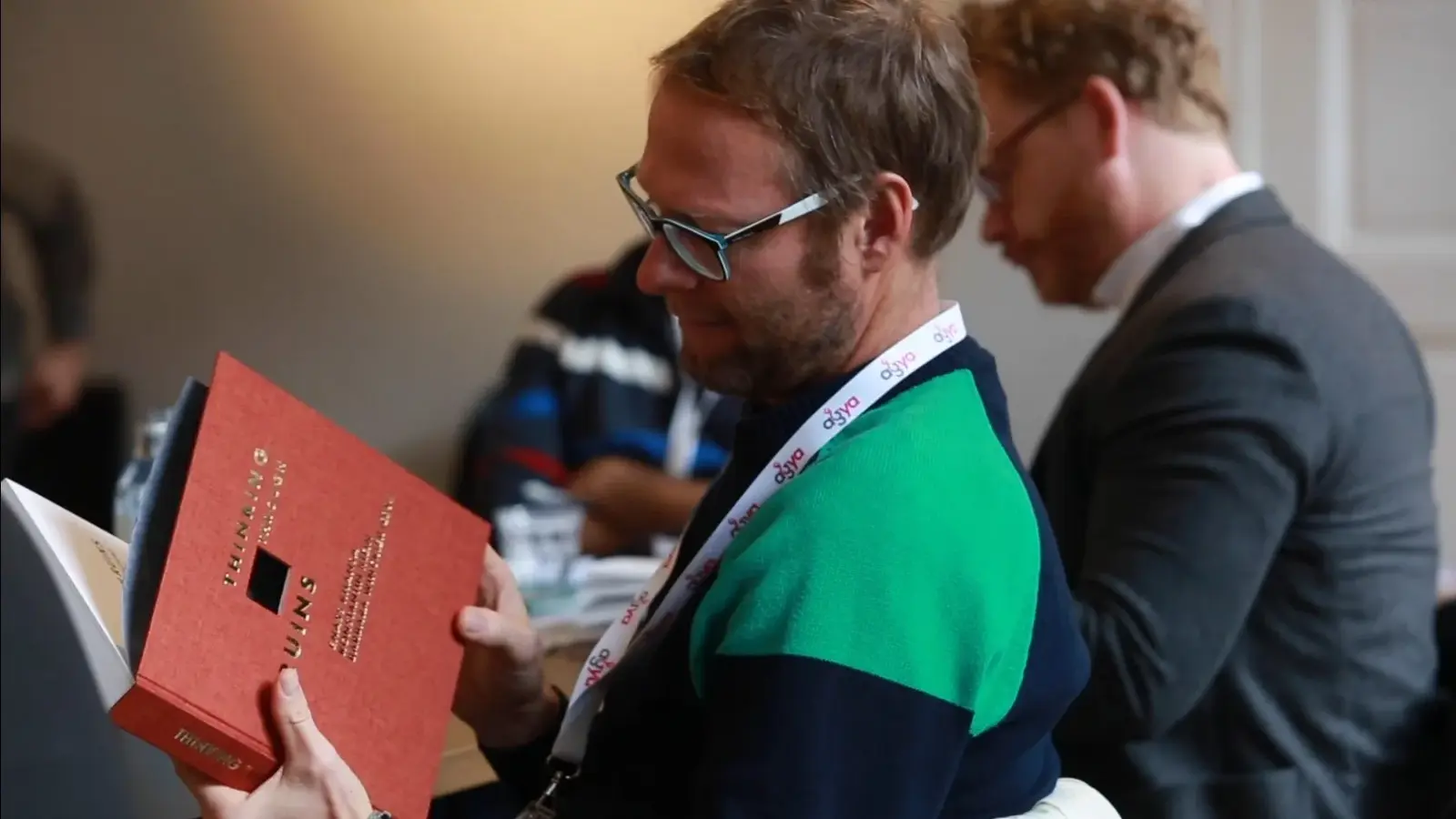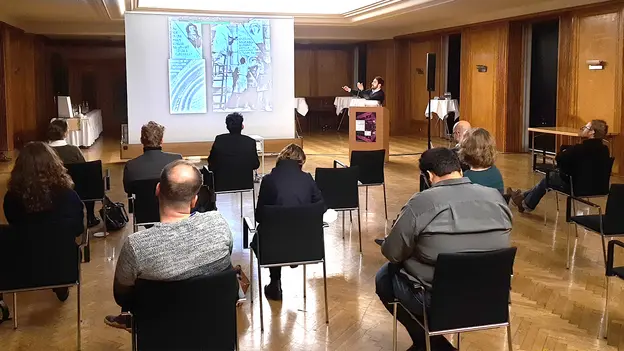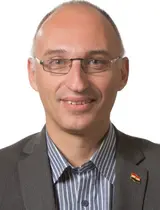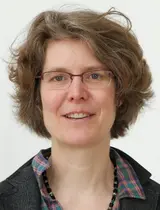Working Group Project
Thinking Through Ruins
Publication
Ruins have always captured the human imagination. In one way or another, they have been inscribed in a community’s memory, history, or lore. In the literary history of the Arab world and of Western Europe, there is a long-standing tradition concerning – real or imagined – ruins.
Both its challenging complexity and aesthetic aspiration has resulted in a multitude of reflections on ruins, interpretations, and creative dealings, which again manifest themselves in a plenitude of scholarship, philosophical treatises, literary texts, and pieces of art. This discourse of ruins offers a unique vantage point for the AGYA Working Group Common Heritage and Common Challenges to reflect in a pioneering publication upon the importance of ruins today – and upon their meaning for our respective societies, disciplines and fields of scholarship. Ruins carry very different notions, however, since they function as very powerful symbols and motifs, they also have been and still are often (mis-)used and employed in contemporary debates.
Ruins expressing ideas of nostalgia, mortality and the transience of life
Arabic poetry knows of the literary motif called al-wuqūf ‘alā l-aṭlāl (‘Standing by the Ruins’). This motif is part of the poet’s speech in which he laments the past, expressing ideas of nostalgia, mortality and the transience of life: Often the poet is reminded of unsuccessful reunions with the beloved by beholding the physically visible traces (al-aṭlāl) of her former homestead. What took its origin as a canonical motif has left the spheres of classical literature, and the terminology of al-aṭlāl (and al-wuqūf ‘alā l-aṭlāl respectively) entered both popular culture and theoretical discourse. The motif can be found in modern poems and songs, such as Umm Kulthūm’s famous song “al-Aṭlāl”, based on a poem which deals with a love that remains unfulfilled due to the divergent paths of life of the lovers but has also been read as a political statement in Nasserist Egypt. In post-war Lebanon, artists and intellectuals draw on the aṭlāl motif to critically engage with the way the official discourse deals with the physical and psychological traces of the war, erases remnants of the recent past and (mis-)uses ruins from the distant past to support their vision of future Lebanon.
Ruins as places of longing and inspiration
Western Europe, and not least the states and territories of the Holy Roman Empire of the German Nation, witnessed a near-obsession with ruins from the mid-18th century onwards: In the wake of the rediscovery of Classical Antiquity and the growing possibilities to physically behold the remains of the past and, later, through the emergence of tourism, the perception of ruins changed noticeably. In the time of the Neoclassical Movement, ruins lost their previous aura of deficiency and became both places of longing and inspiration. They reminded the people of their aspirations and capacities: The glory that was once Rome, to use but one prominent example, could be re-built and re-created by a critically thinking, cultivated, and creative society. Little later, the sentimental approach to ruins changed once again, redirecting their deictic function towards the inner self: Perhaps the limitedness of human beings could be accepted, when also the great footsteps of the past could wither away. This reflective mind-set might serve as an explanation why suddenly in the first decades of the 19th century it became fashionable to newly construct ‘ruins’ in parks and landscaped gardens. These new ‘ruins’ invited their beholders to reflect upon time, glory, and eventually one’s own mortality.
The interdisciplinary volume focuses on the importance of ruins, the way ruins are looked at, interpreted and (mis-)used in literary and artistic, political and legal, philosophical and sociological discourses. It has been published as an E-Book in December 2021 and as a linen-bound print version in January 2022 by KADMOS.
In the framework of an international workshop, organised by the editors and AGYA members Dr. Enass Khansa and Dr. Konstantin Klein, and AGYA alumna Dr. Barbara Winckler, the book was launched together with Wolfram Burckhardt from Kadmos Publishing House at the KW Institute of Contemporary Art in Berlin.
With most of the workshop participants beeing contributors to the volume or possible future collaboration partners, jointly the continuation of the project was elaborated in an inspiring exchange. For two days, the group discussed innovative formats, ideas and concepts on how to present ruins: their definition in different contexts, their necessity of preservation in relation to society needs, and its impact on intellectual thought and personal experience. The discussion was supported by a field trip to the ruins and rebuildings of Kaiser Wilhelm Memorial Church in Berlin and an impulse lecture from Lebanese and San-Fransisco-based artist Kevork Mourad on ‘Restoring Aleppo in Art’.
In a publicly streamed keynote by Francisco Prado-Vilar, University of Santiago de Compostela, on ‘A Sum of Destructions: Reflections on Iberian Ruins from Madinat al-Zahra to Guernica’, the volume was also presented in the Einstein Hall of the Berlin-Brandenburg Academy of Sciences and Humanities (BBAW).
- Disciplines Involved
- Anthropology, Arabic Studies, Archaeology, Architecture, Art History, Balkan Studies, Chinese Studies, Egyptology, Heritage Conservation, History, Indology, Literary Studies, Museology, Philosophy, Political Sciences, Psychology, Sociology and Urban Planning
- Cooperation Partner
- KW Institute for Contemporary Art KUNST-WERKE BERLIN e. V., Germany
- Event Date
- 3 - 4 December 2021
- Venues
- KW Institute for Contemporary Art KUNST-WERKE BERLIN e. V., Germany
- BBAW – Einstein-Saal, Germany
- Project Title
- Thinking Through Ruins
- Year
- 2020 - 2021
- Funding Scheme
- Working Group Project
- Working Group
- Common Heritage and Common Challenges
- Countries Involved
- Egypt, Germany, Kuwait, Lebanon
- AGYA Publication
- The Invention of Ruins in Graeco-Roman Antiquity
- Reducing Artefacts and Shrines to Ruins: The Staging of Cultural Heritage Destruction as a Mediatised Conflict Strategy
- Organized Decay: Genealogies, Functions, and Interpretations of Ruins
- Thinking Through Ruins
- Thinking Through Ruins (eBook)
Thinking Through Ruins: Book Launch
Watch the highlight video of the book launch and explore the various ways ruins are interpreted through time.












